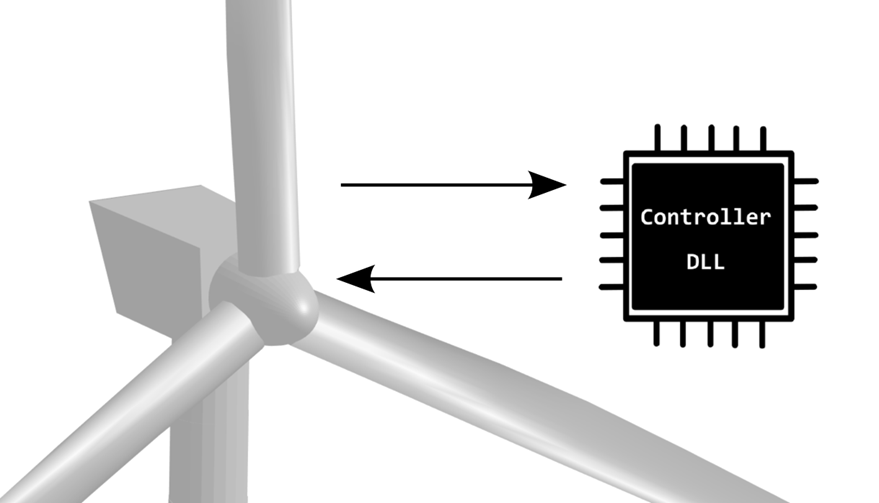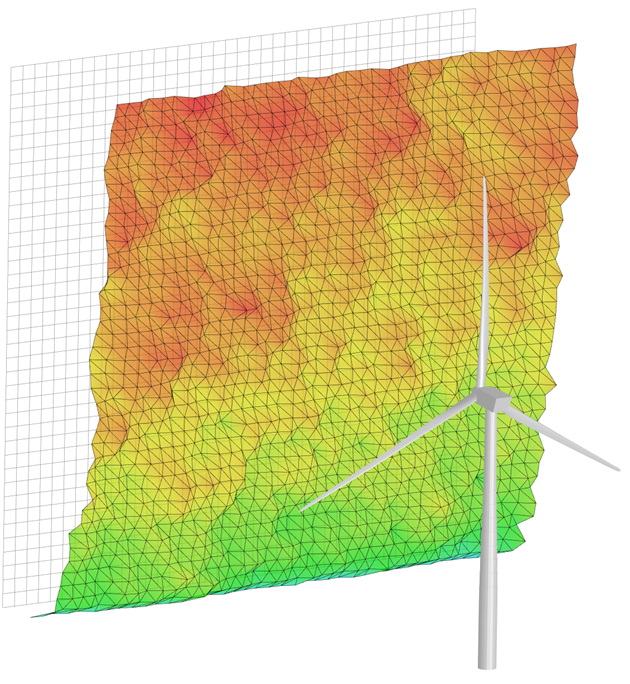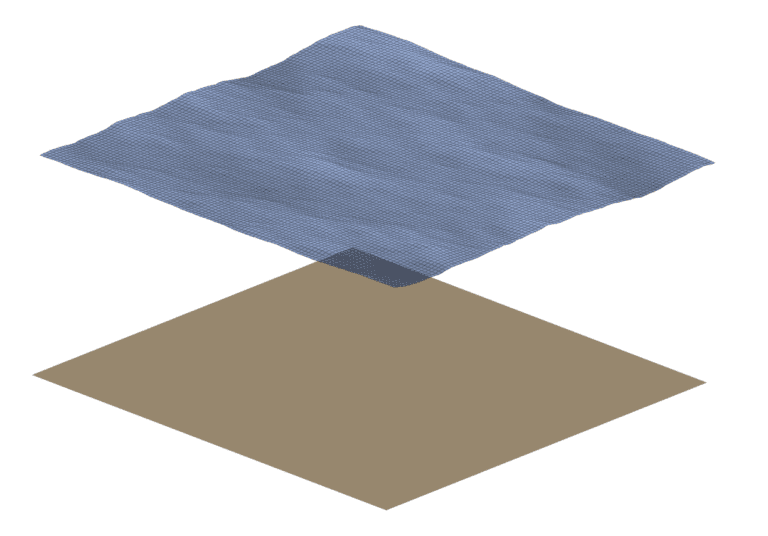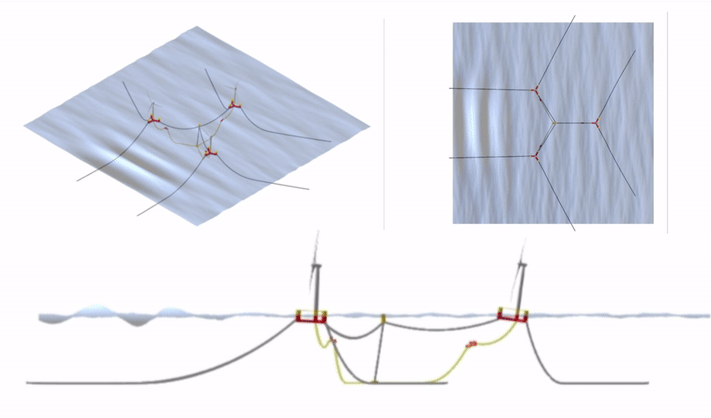The QBlade Software
QBlade is a beyond-state-of-the-art wind turbine simulation code, covering all aspects of wind turbine design, analysis, and certification. Developed over more than a decade of research and engineering, QBlade provides a modular set of highly efficient solvers for aerodynamics, structural dynamics, and hydrodynamics, all integrated in a modern object-oriented C++ framework. The result is a single tool that can simulate everything from airfoils and blades up to complete wind farms with unequaled fidelity.
Designed for Modern Hardware
From day one, QBlade was built to exploit today’s multi-core CPUs and GPUs. Heavy computations are parallelized (CPU via OpenMP, GPU via OpenCL) to achieve fast runtimes. This means even models with thousands of degrees of freedom can run faster than real time without sacrificing accuracy. QBlade runs on Windows and Linux, scaling from personal laptops to HPC clusters.
Accessible to Everyone
A guiding principle of QBlade’s development is to make advanced wind turbine simulation effortless, fun, and accessible to everyone. The software includes an intuitive GUI that guides users through the turbine design process. All model inputs (airfoils, blades, turbines, wind/wave conditions, etc.) are organized in a logical workflow, and every simulation result is visualized for instant feedback. Complex projects can be saved as portable files, making it easy to share models or collaborate with colleagues.
Community Edition (Open & Free)
The Community Edition QBlade-CE is openly available under the Academic Public License for non-commercial use. This edition contains the full core functionality for aero-hydro-servo-elastic simulations without artificial limits – making cutting-edge turbine simulation available to students, educators, and researchers at no cost (QBlade-CE shares identical physics models with the Enterprise Edition, ensuring that research results are directly applicable to the commercial version).


What Drives Us
Wind turbines have grown larger and more complex over the past decades – from swept blades to floating platforms – yet many design tools still rely on simplified aerodynamic models from the last century. Our mission is to set a new standard for wind turbine simulation by moving beyond the Blade Element Momentum (BEM) method and embracing modern, higher-fidelity approaches
Replacing BEM with LLFVW
QBlade uses the Lifting-Line Free Vortex Wake (LLFVW) method as its primary aerodynamic model. LLFVW removes most of the simplifying assumptions inherent in BEM, providing a more accurate and general solution. This approach explicitly models the turbine’s wake with Lagrangian vortex elements, capturing the true 3D induction effects and unsteady aerodynamics. The benefit is reduced uncertainty and improved accuracy – particularly for today’s large, flexible blades and floating turbines where BEM assumptions break down. In dynamic conditions (e.g. emergency stops, severe sea states), QBlade’s advanced aerodynamics can improve load prediction accuracy by up to 15% compared to traditional models
Enabling Innovative Designs
Because LLFVW is so general, QBlade can simulate unconventional turbine geometries and scenarios with ease – from vertical-axis wind turbines and highly swept blades to multi-rotor turbines with complex wake interactions. This opens the door for researchers and developers to explore novel concepts that would be difficult or unreliable to evaluate with legacy tools. Our motivation is to empower innovation in wind energy by providing a tool that keeps up with the cutting edge of turbine technology.
Aerodynamic Model
QBlade’s aerodynamic solver is a highly optimized and validated LLFVW implementation. Instead of approximating induced flow with a momentum balance (as in BEM), QBlade explicitly simulates the dynamic wake. This yields a detailed spatial and temporal picture of the flow field around the rotor, capturing phenomena like turbine wake interactions, the aerodynamics of oscillating floating turbines, and the unsteady behavior of VAWT wakes with much greater fidelity. Importantly, QBlade’s LLFVW uses the same input definitions as a BEM model – so users can take an existing design based on BEM and simply re-run it in QBlade for higher accuracy and deeper insight.
Integrated Dynamic Stall Models
To handle stall and unsteady airfoil behavior, QBlade provides multiple dynamic stall models. Users can choose from the advanced ATEFlap model, the widely used Øye model, or the Gormont-Berg model (tailored for VAWTs) to best represent their system’s aerodynamics.
Active Flow Control
QBlade supports aeroelastic simulations with active aerodynamic controls. Using dynamic airfoil polars, you can model blades with distributed flaps or other control surfacesqblade.org. These can be driven by the turbine’s control logic or by prescribed functions, allowing simulation of technologies like active load control or individual blade pitch.
Ready for Large-Scale Simulations
Despite the high fidelity of LLFVW, QBlade’s aerodynamic code is extremely fast. By leveraging GPU acceleration, multi-core processing, and adaptive wake resolution, the computational cost is reduced by 5–6 orders of magnitude compared to a naive implementation. This makes it practical to include high-resolution aerodynamics in iterative design and certification loops – QBlade can perform detailed aeroelastic simulations faster than real time on a single workstation


Structural Dynamics Model
Wind turbine structures in QBlade are modeled with a true multi-body dynamics approach. Each component (blades, hub, tower, nacelle, mooring lines, etc.) is represented either as a rigid body or a flexible Euler-Bernoulli beam, assembled in a co-rotational framework. This allows all relevant degrees of freedom, large deflections, and non-linear behavior to be captured. For floating offshore turbines, specialized cable elements are included to model complex mooring system dynamics with high fidelity
Flexible, Stable and Powerful
Our structural solver, built on the open-source Project Chrono library, delivers exceptional numerical stability and performance. Even extreme scenarios – like a turbine experiencing an earthquake or a floating turbine in a severe storm – can be simulated in real time without numerical instability. The multi-body approach offers enormous flexibility for custom designs: users can easily model novel support structures (e.g. new floating concepts, truss towers, multi-rotor connections) by mixing rigid connections, flexible joints, springs/dampers, and more
Easy Model Setup & Data Import
Constructing a detailed turbine model in QBlade’s GUI is straightforward and visual. Each component’s properties and connections are defined interactively, and the software provides immediate feedback through visualization. If you have existing models from other tools, QBlade can import structural data from windIO, HAWC2, or OpenFAST formats, as well as various standard file types – minimizing the effort to migrate or cross-check designs.
Hydrodynamic Model
For offshore turbines, QBlade includes an integrated hydrodynamics module to simulate both bottom-fixed and floating systems. The user can choose between multiple hydrodynamic load calculation methods: a potential flow solver (including wave radiation/diffraction effects), a Morison-equation-based strip theory, or a hybrid combination of the two. Higher-order slow-drift wave forces (QTFs) are supported, and QBlade can import frequency-domain hydrodynamic data from popular tools like WAMIT, NEMOH, or BEMUSE.
Local, Nonlinear Calculation
QBlade’s hydrodynamic forces are evaluated locally on each structural element of the substructure, at its instantaneous position and orientation. This means as a floating platform moves and flexes, the wave loads adjust in real time to the displaced geometry – capturing effects like changing buoyancy and wave kinematics due to large motions. The model also implements various wave stretching methods to better estimate near-surface wave kinematics for extreme waves
Added Mass Stability
The notorious “added mass instability” problem in fluid-structure interaction is handled elegantly in QBlade. The code automatically adjusts an additional, distributed inertia matrix on each hydrodynamic element every time step to account for added mass. This lets QBlade use efficient loosely-coupled solvers without sacrificing stability – a simple solution that ensures robust simulations even for very light or flexible structures interacting with water.

Controller Integration
No wind turbine simulation is complete without control systems. QBlade makes it easy to integrate full turbine controllers with your model. It supports industry-standard DLL controller interfaces (both DNV Bladed style and DTU Wind Energy style), so you can plug in existing controller binaries without modification. This means a controller designed for another aeroelastic code can be reused directly in QBlade. Additionally, we provide an open-source reference controller (the TUB controller) with advanced features like Individual Pitch Control (IPC), configurable via a simple XML format. Through an inter process communication bridge (IPC) QBlade also works seamlessly with older legacy controllers, compiled in 32-bit.
For advanced users, QBlade-EE offers a software-in-the-loop (SIL) functionality: you can load QBlade as a library in Python or MATLAB/Simulink and script it. This allows co-simulation or custom automation – for example, coupling QBlade with external optimization algorithms, or running hundreds of parametric simulations programmatically.


Wind Generation
Realistic wind inflow conditions are crucial for accurate load predictions. QBlade integrates NREL’s TurbSim, or DTU’s Mann generator tool to generate turbulent wind fields on the fly. Users can specify all standard turbulence parameters, and QBlade will produce IEC-compliant turbulent wind files behind the scenes for each simulation. Deterministic wind scenarios required by IEC 61400 (such as Extreme Gusts, Wind Shear, etc.) are also auto-generated through QBlade’s DLC preprocessor. For steady conditions, you can define uniform or sheared wind profiles (power law, logarithmic, directional shear) easily in the GUI.
Wave Generation
For offshore simulations, QBlade includes a sophisticated wave field generator. You can create uni- or multi-directional irregular waves based on common spectra (JONSWAP, ISSC, Torsethaugen, Ochi-Hubble, or custom spectra). QBlade lets you choose between equal-energy or equal-frequency discretization for the spectrum, and you can import custom wave time-series or specific wave components if needed. This built-in wave generation capability means you don’t have to prepare wave input files externally – QBlade handles it all within your project.
Furthermore, QBlade integrates ECN’s Grid2Grid library, letting you import HOS-Ocean or HOS-NWT wave fields straight into QBlade. The Higher-Order Spectral (HOS) method retains the nonlinear wave-wave interactions that linear (Airy) theory ignores, giving phase-resolved kinematics, crest-trough asymmetry, and amplitude-dependent dispersion – crucial for offshore arrays with shared moorings. With HOS-NWT you can mirror laboratory wave-tank conditions and run a digital twin alongside, or ahead of, physical tests.



